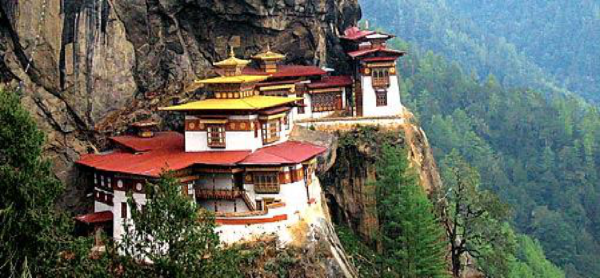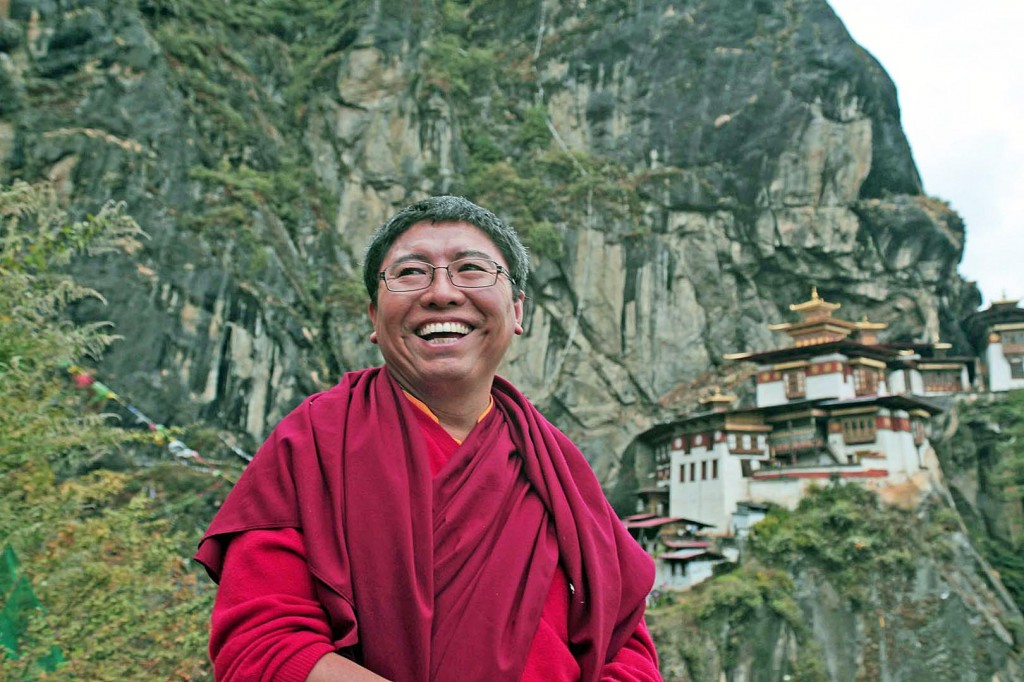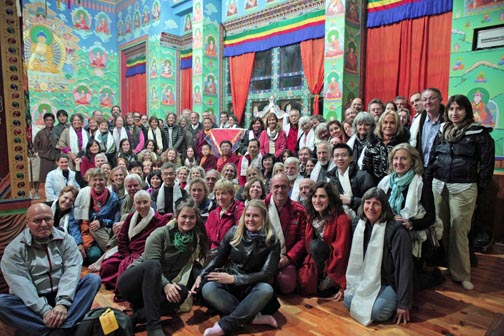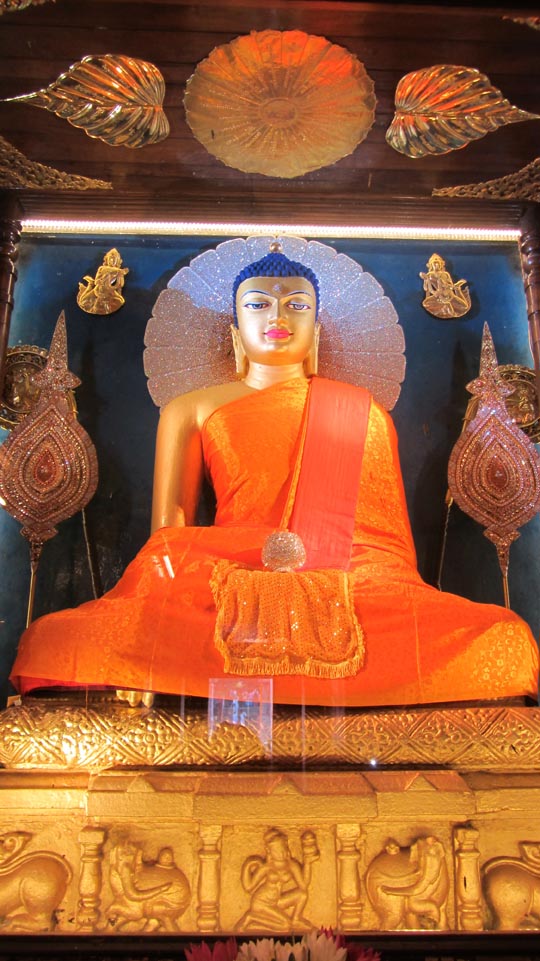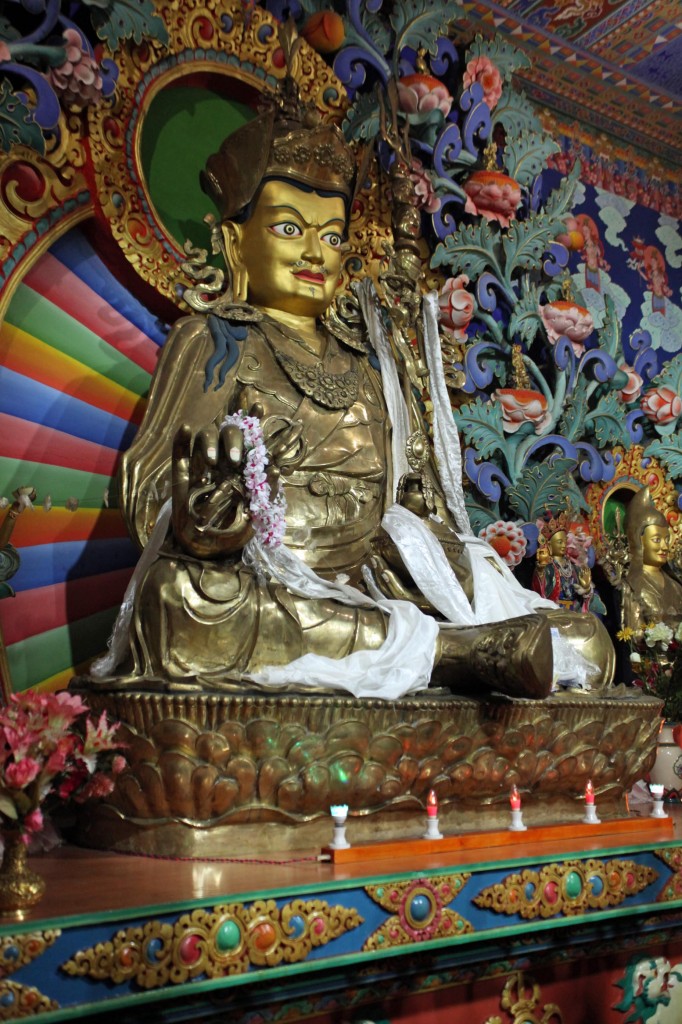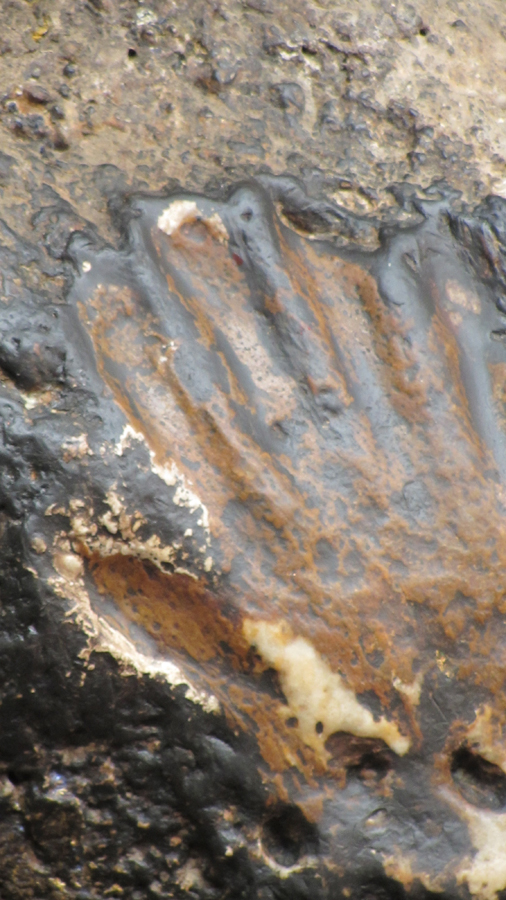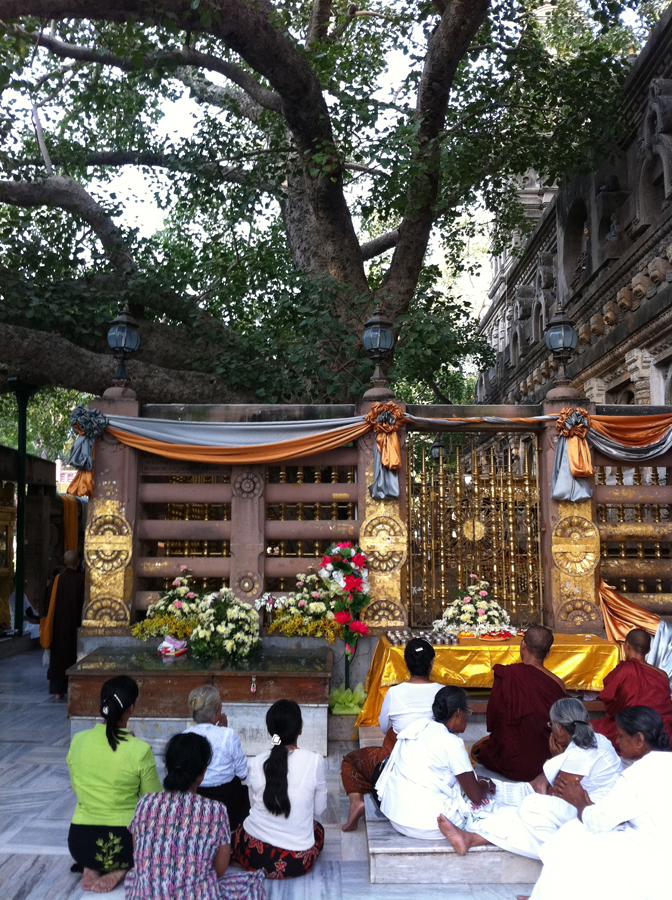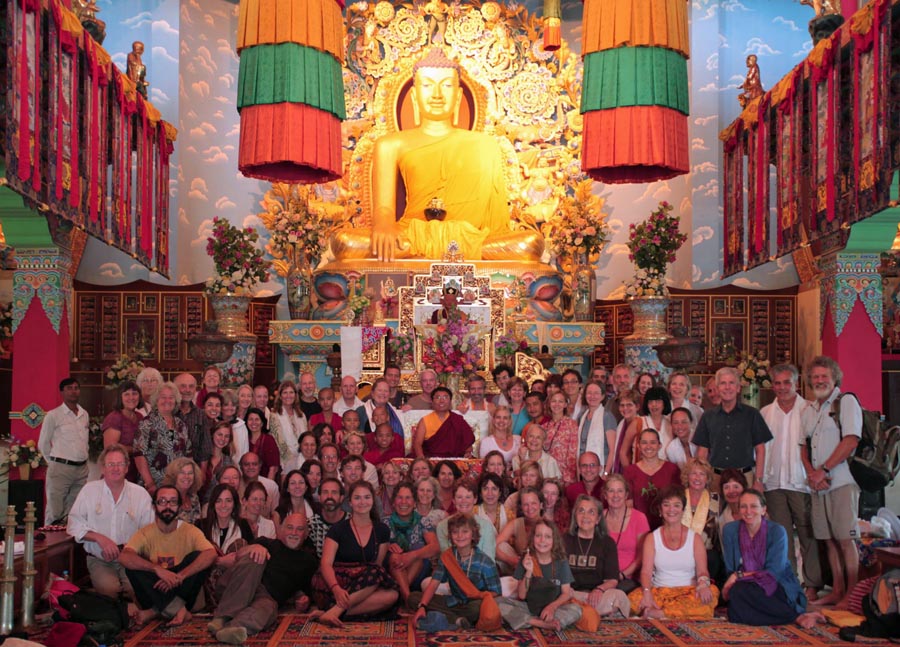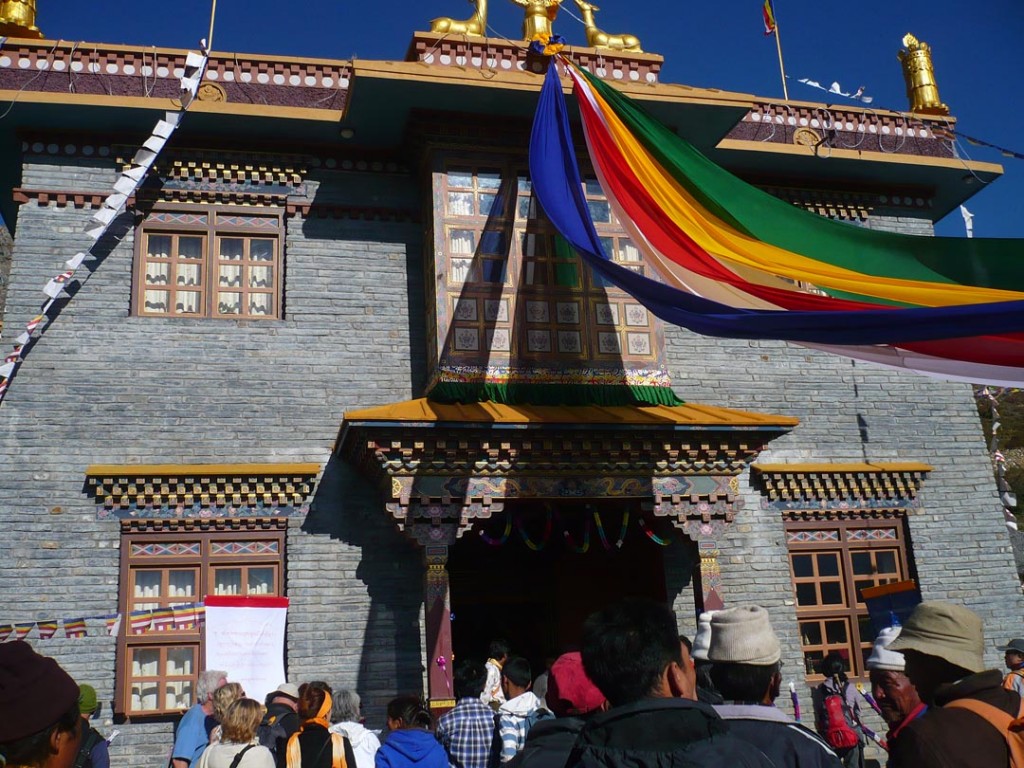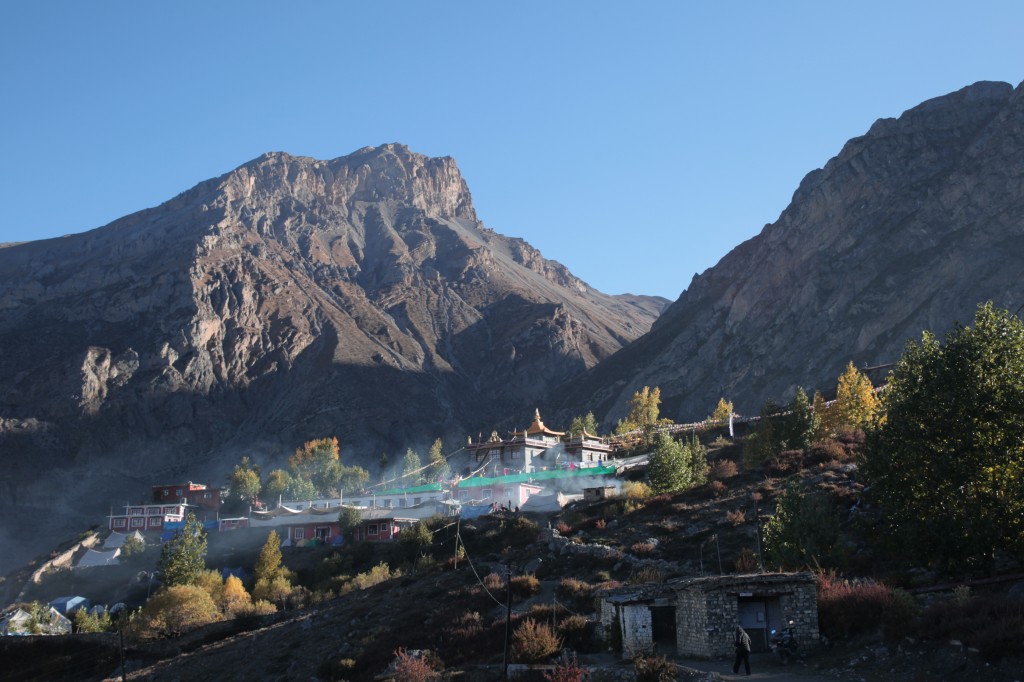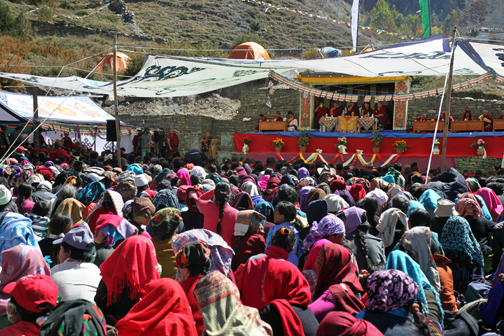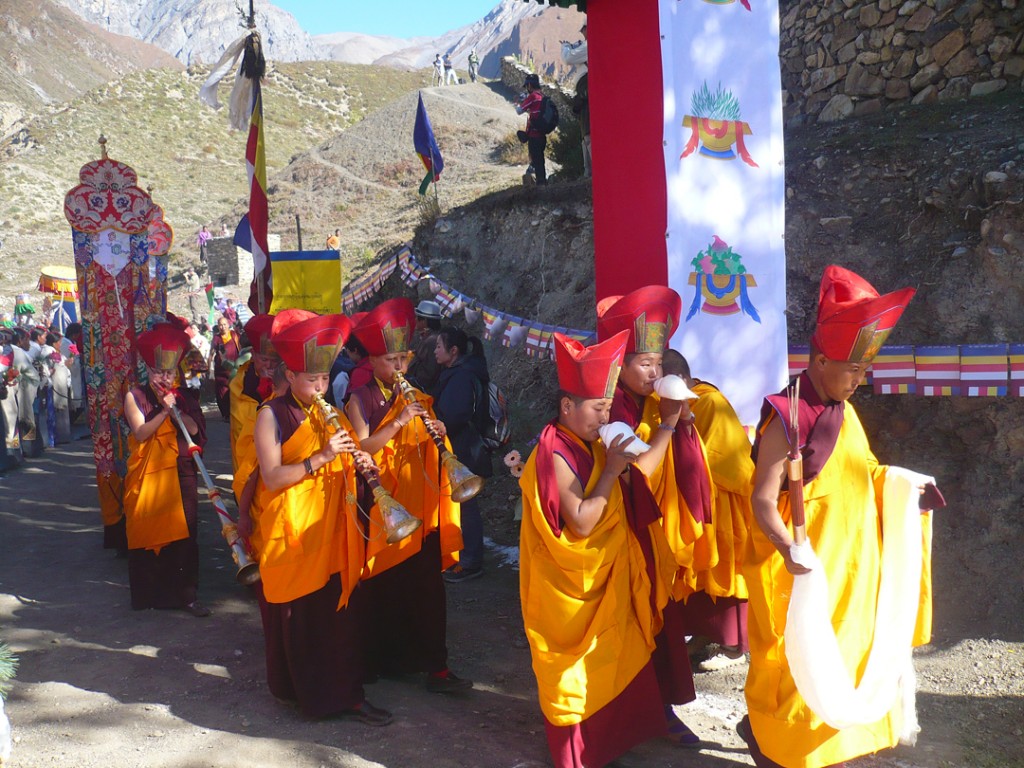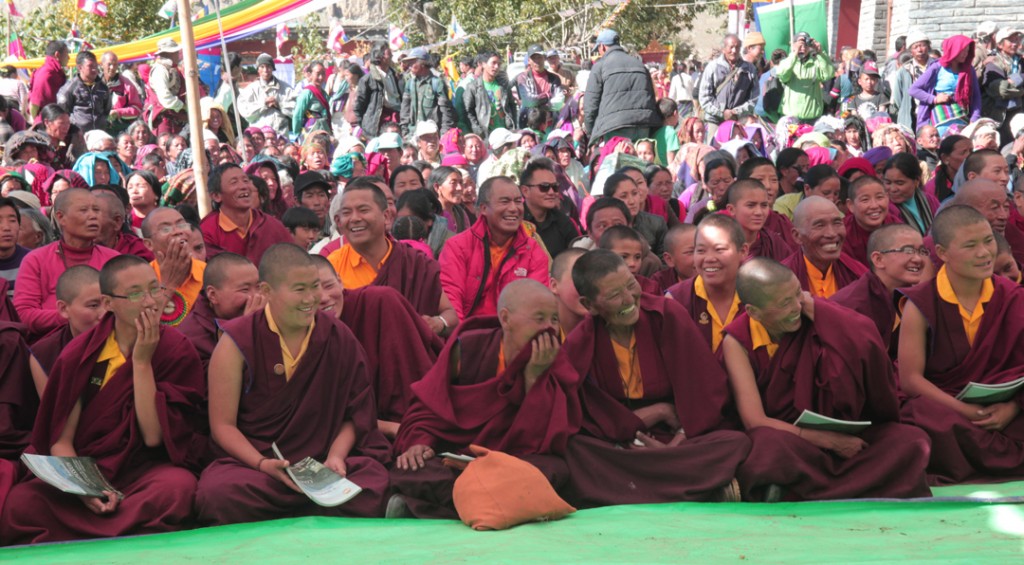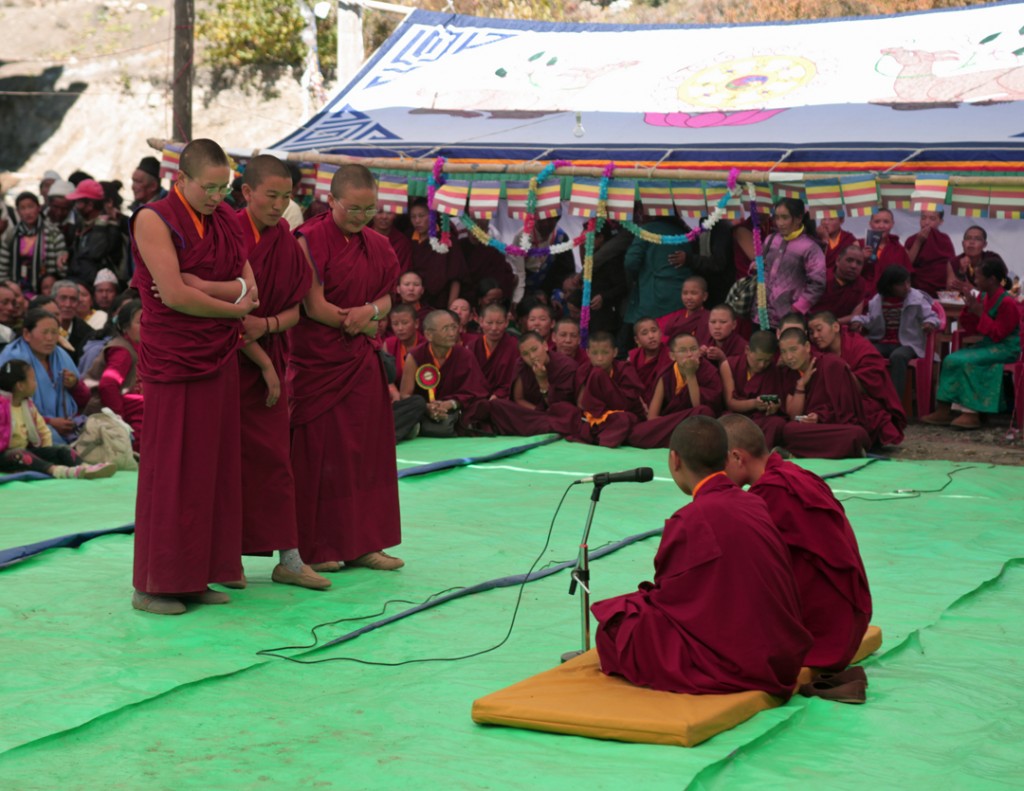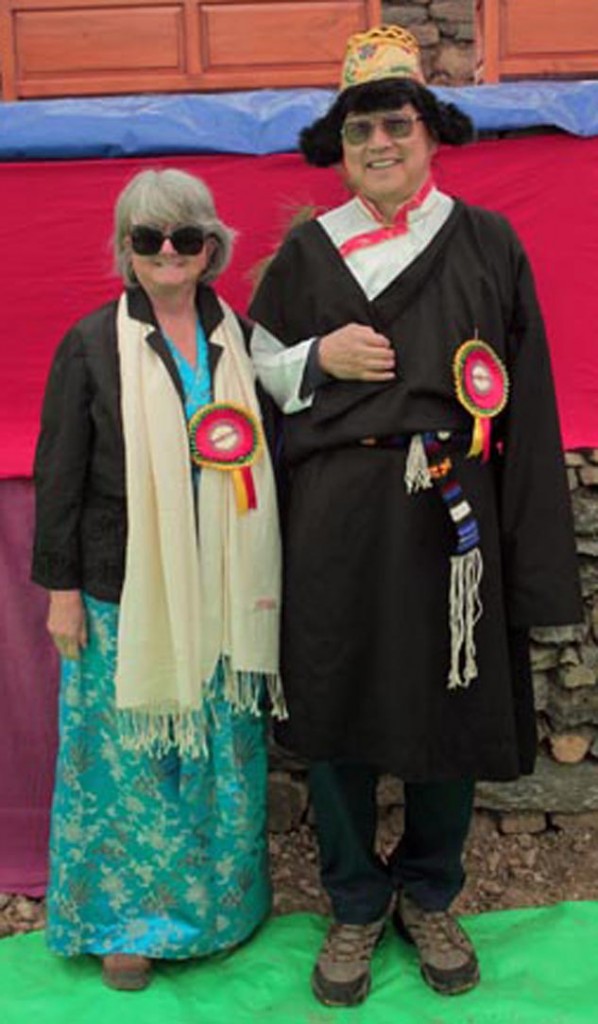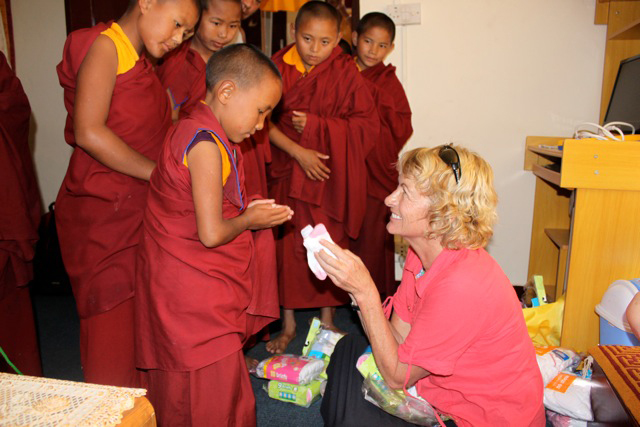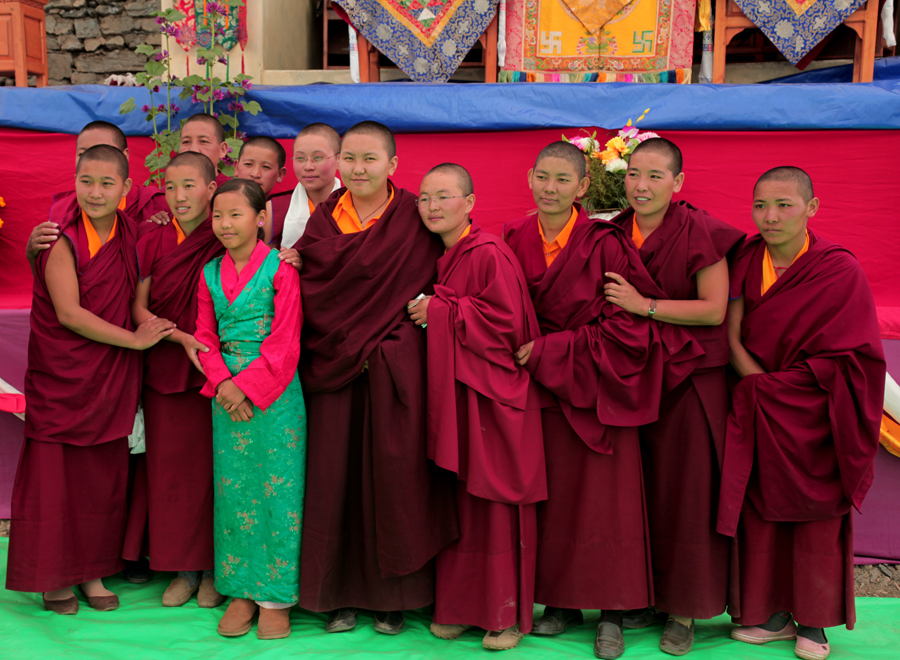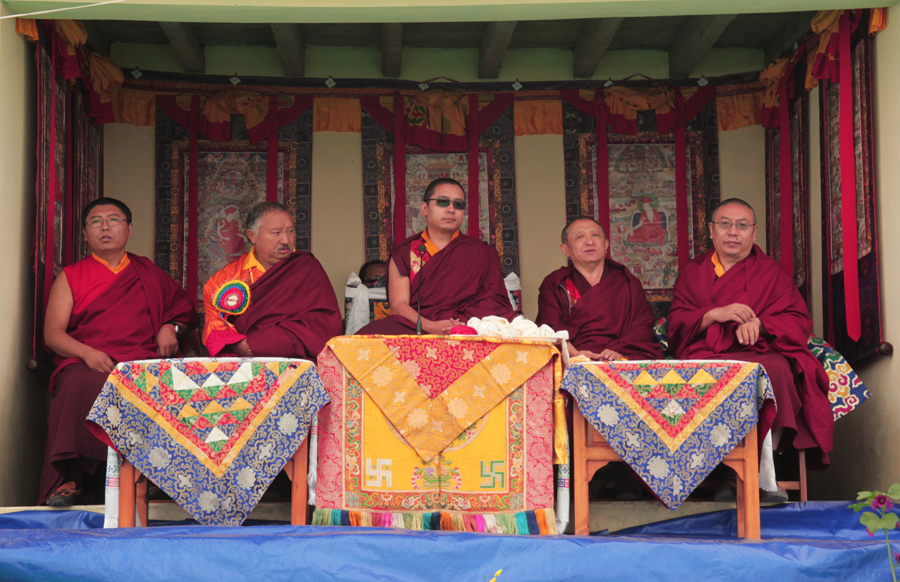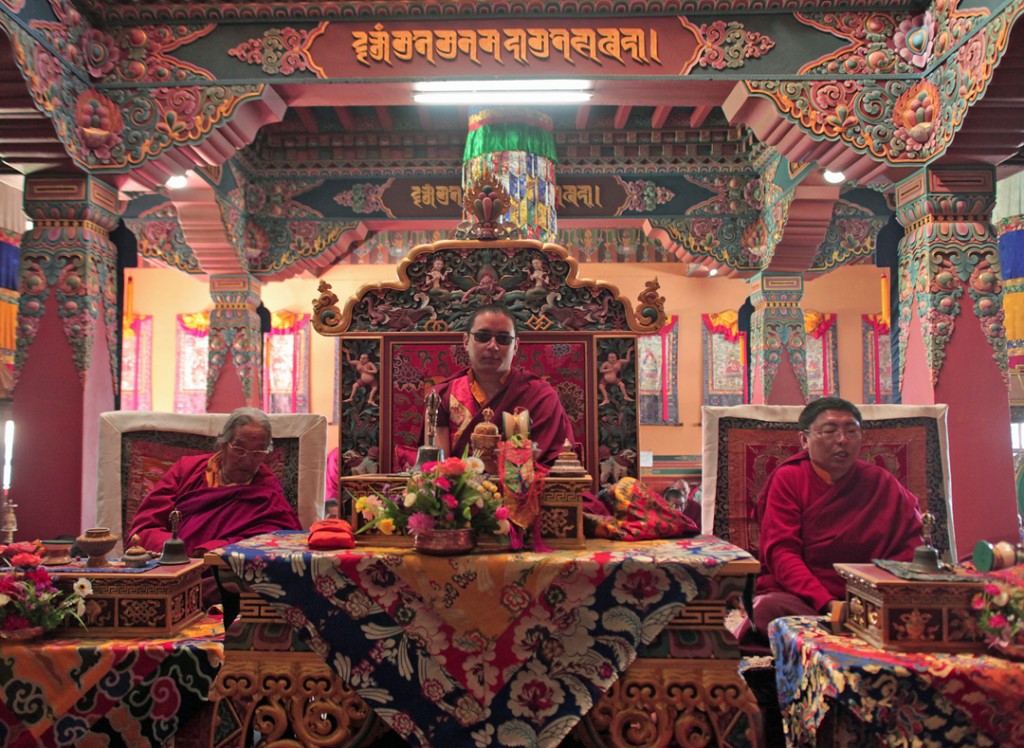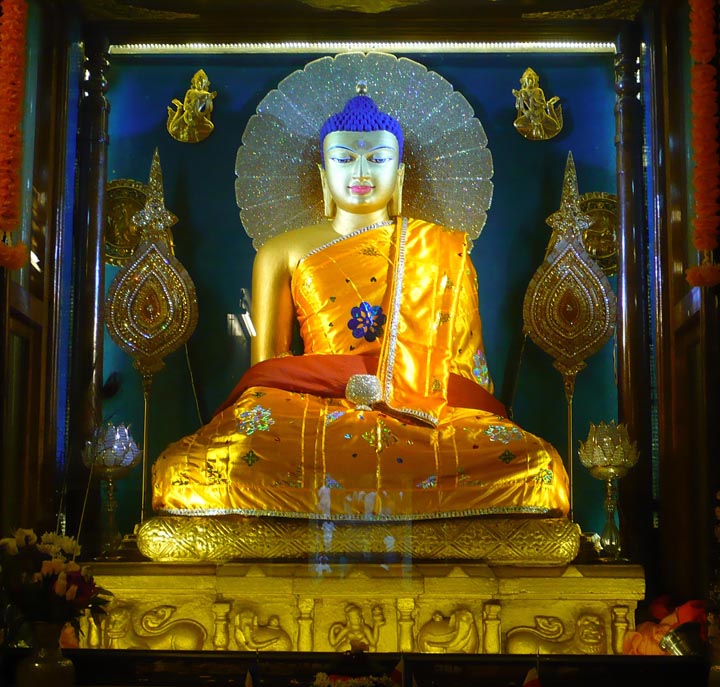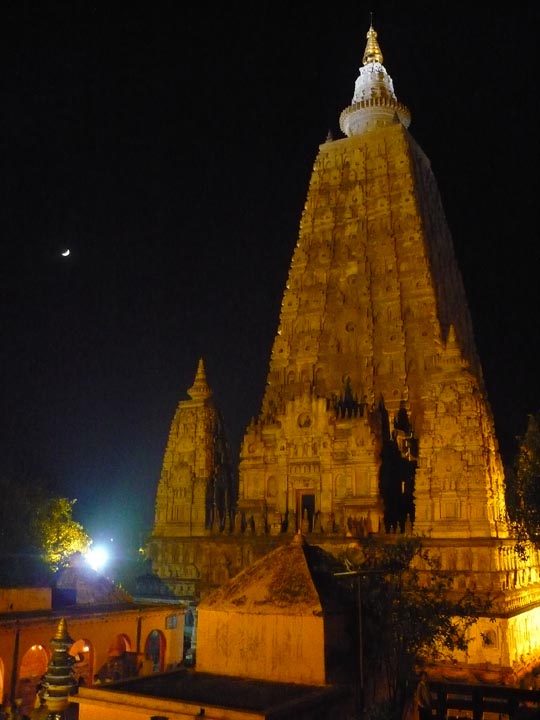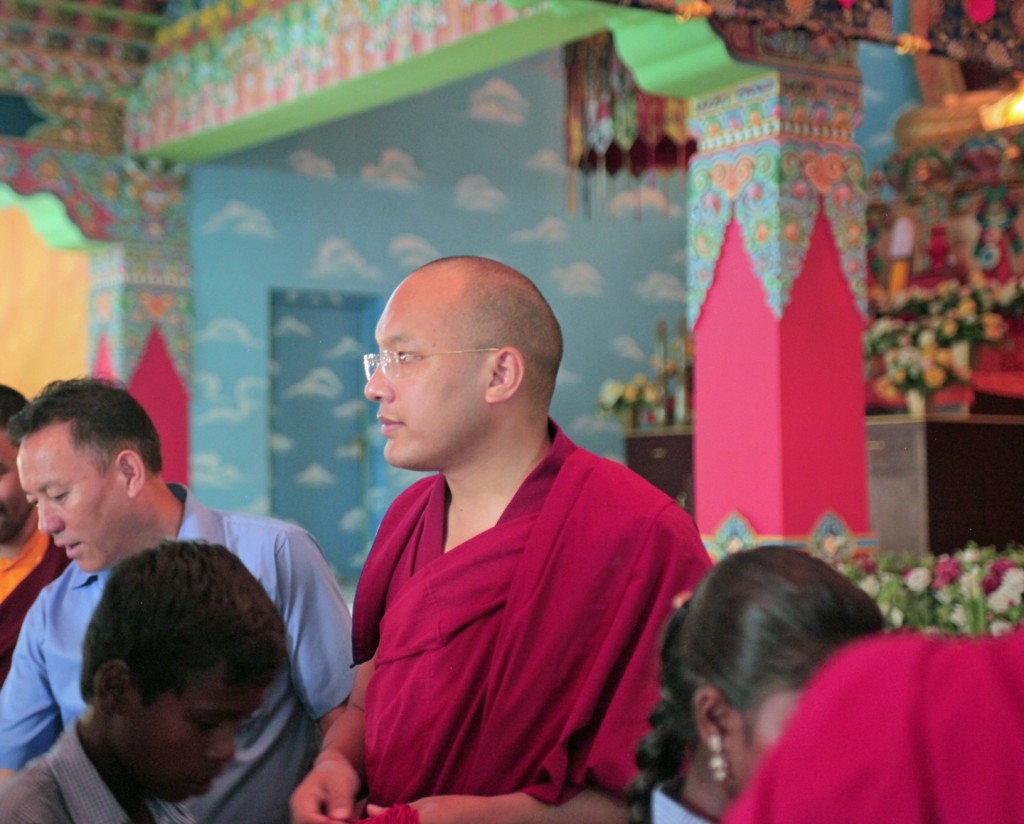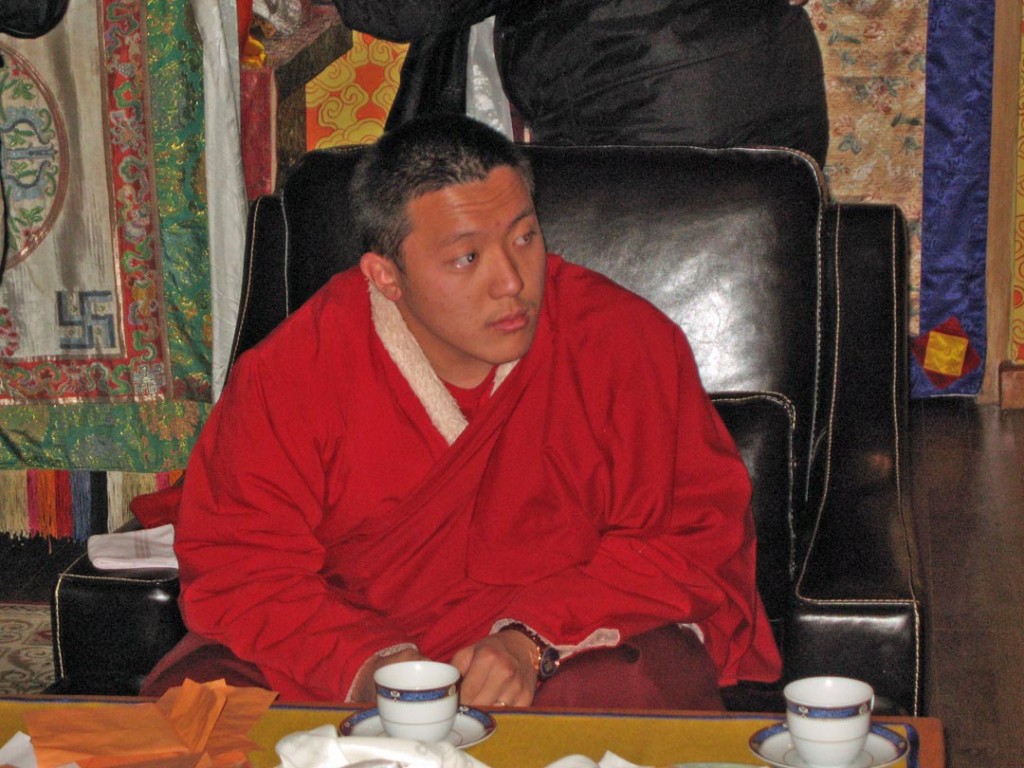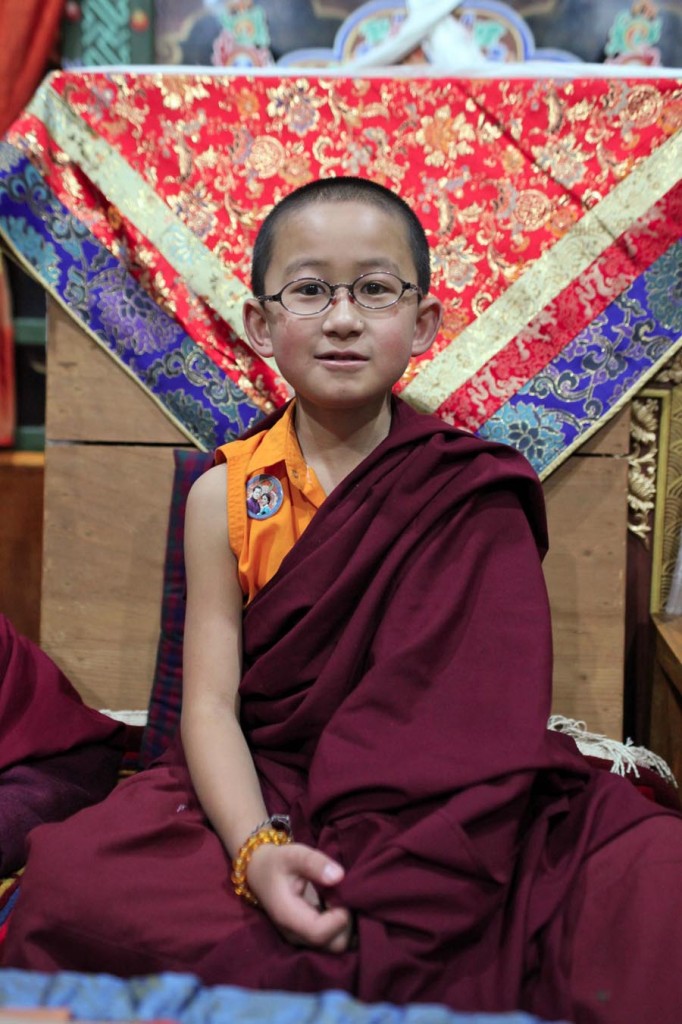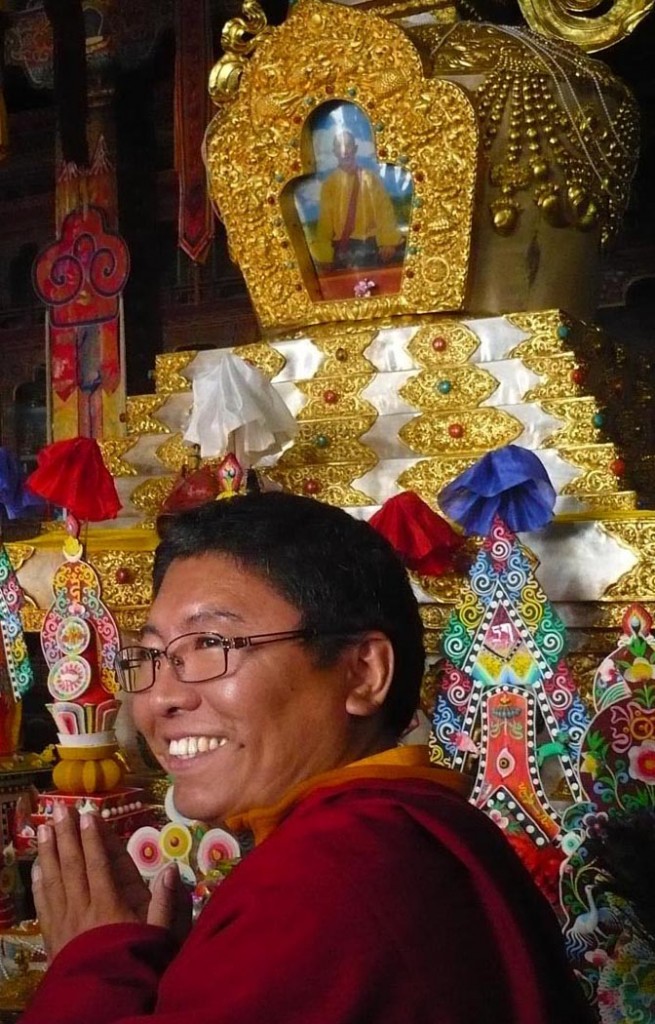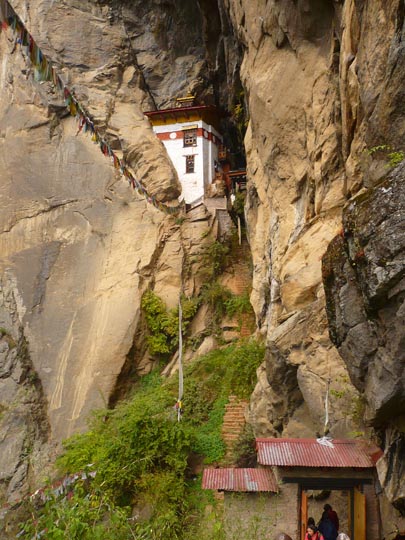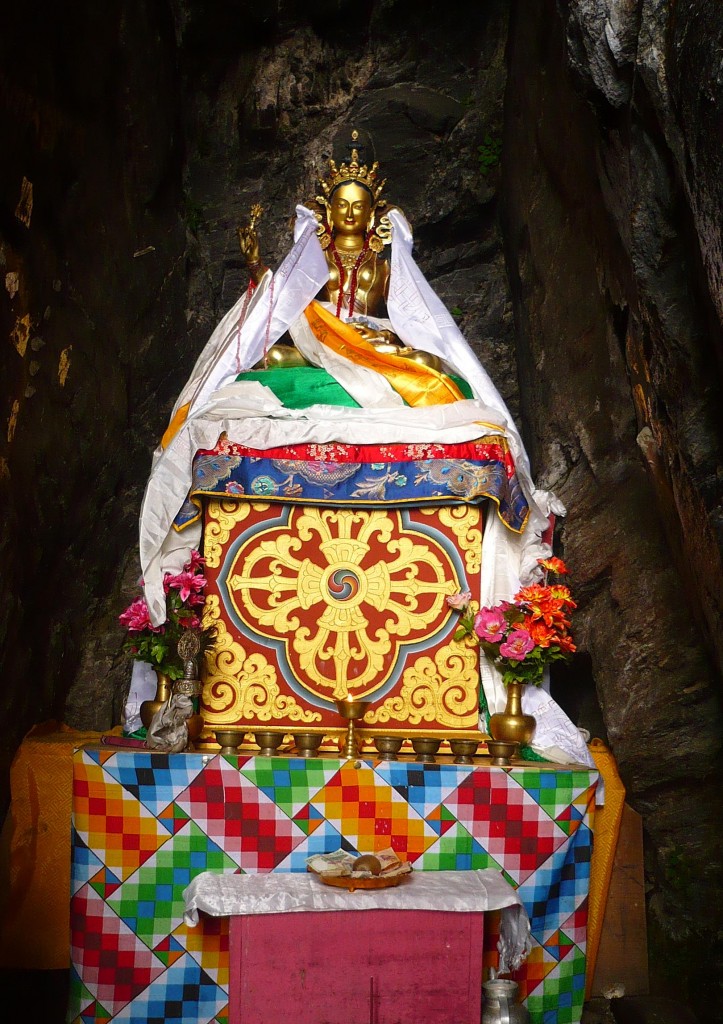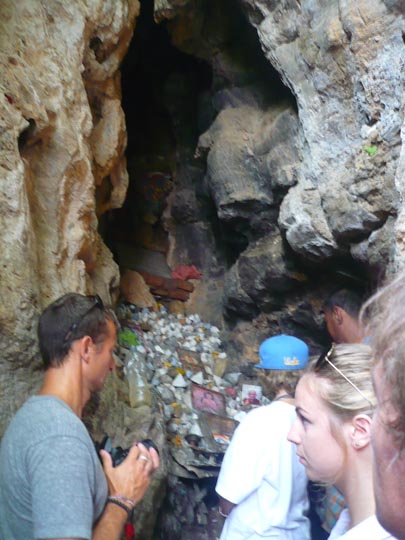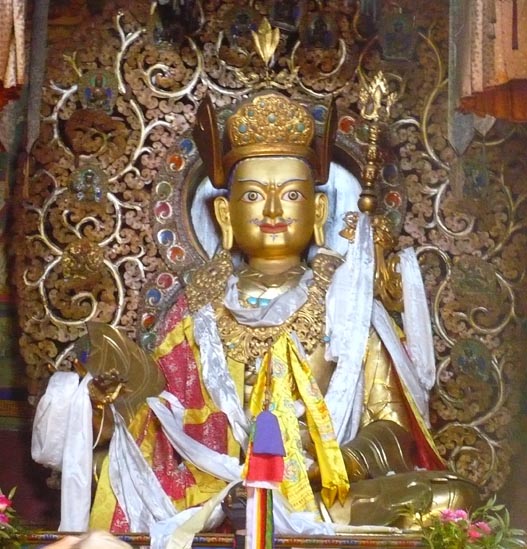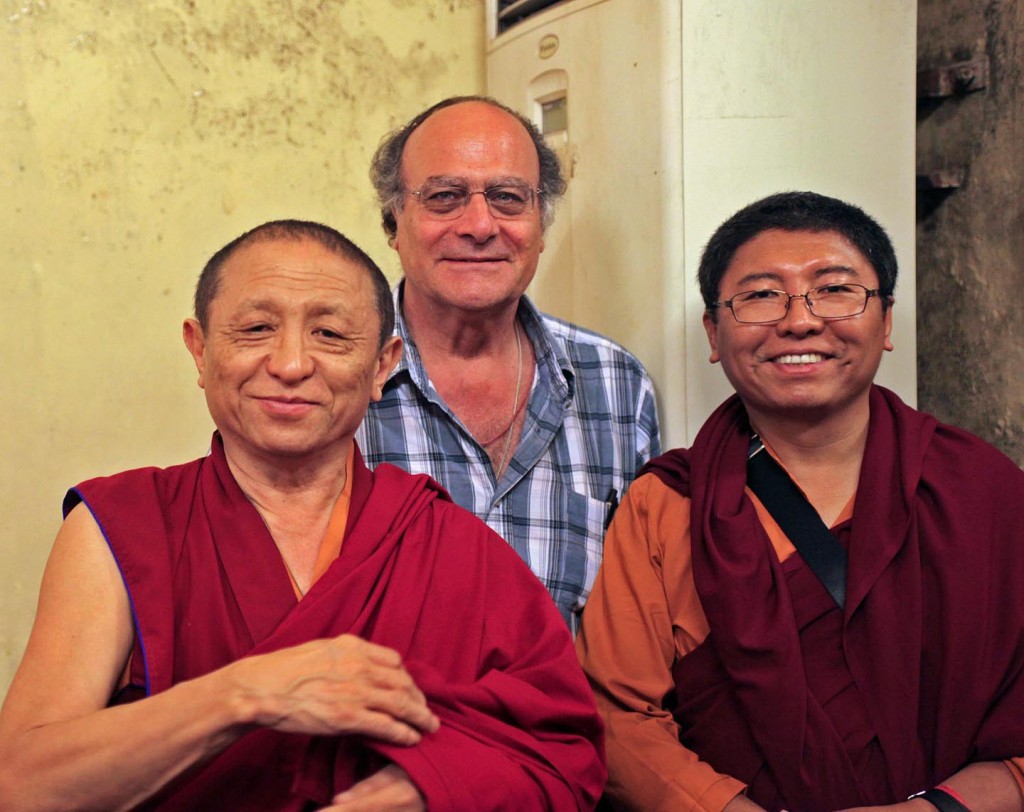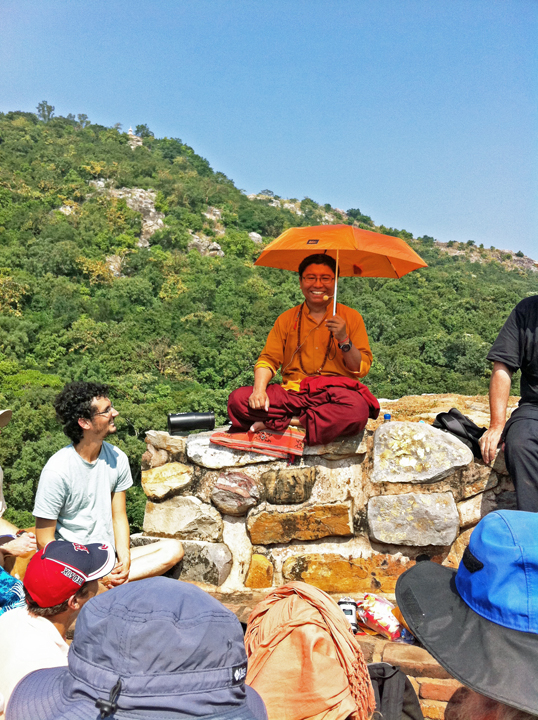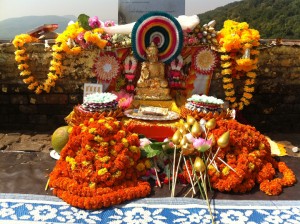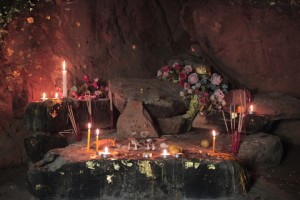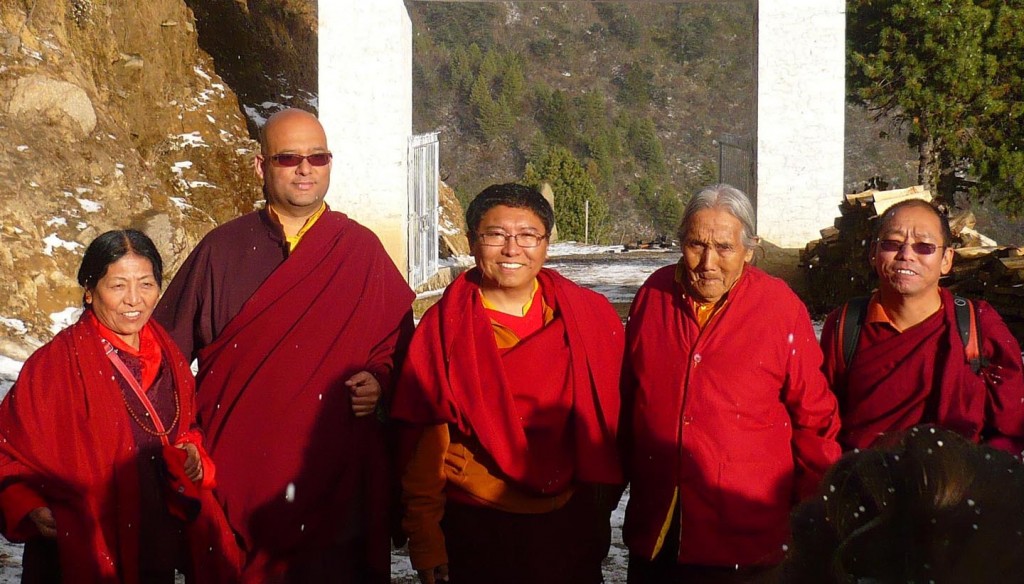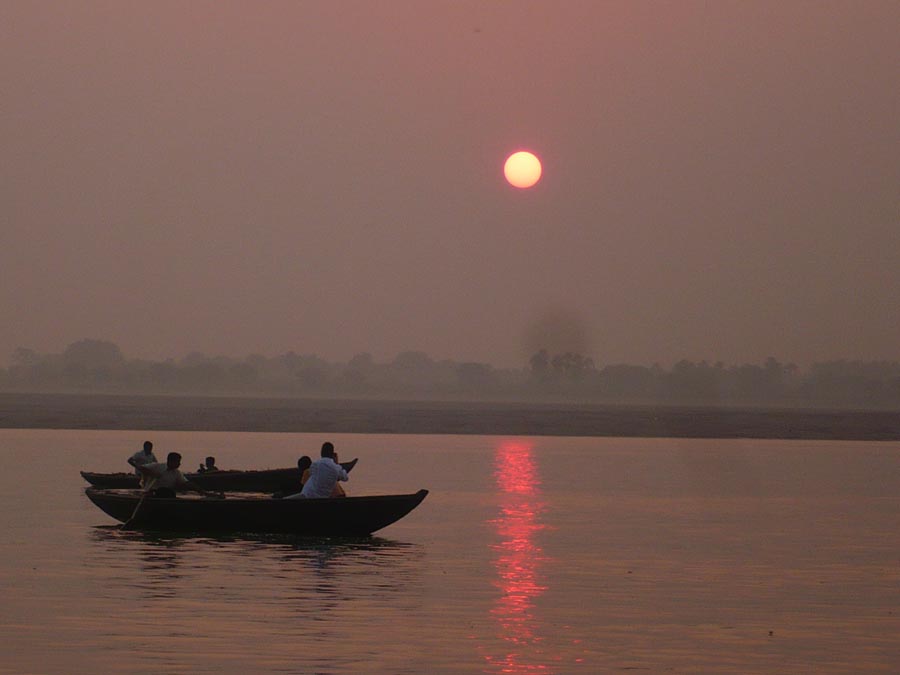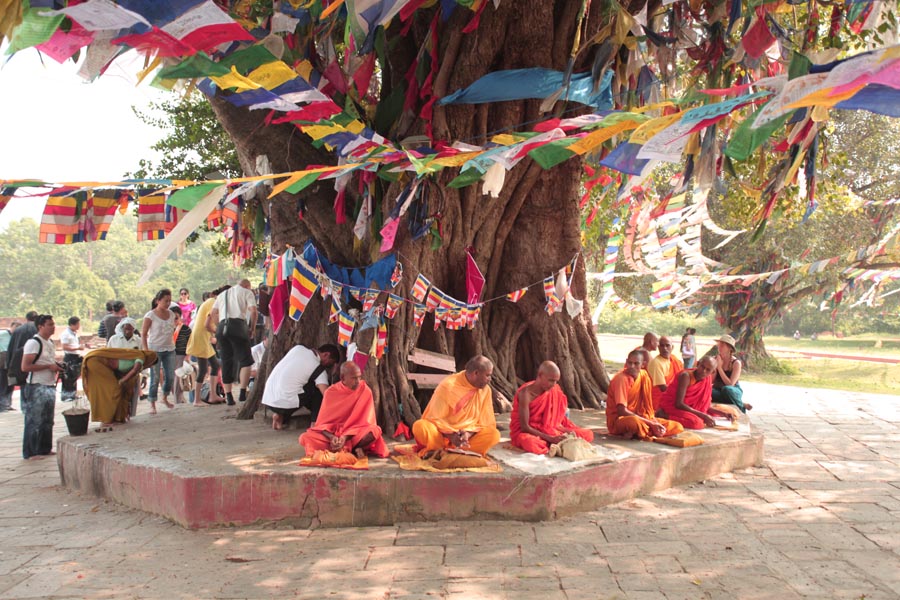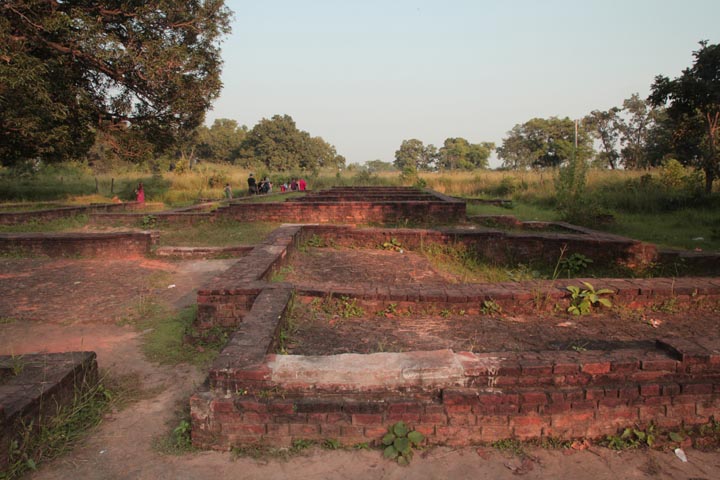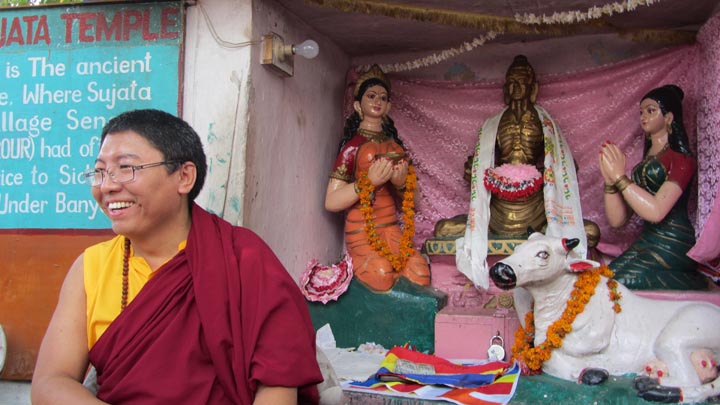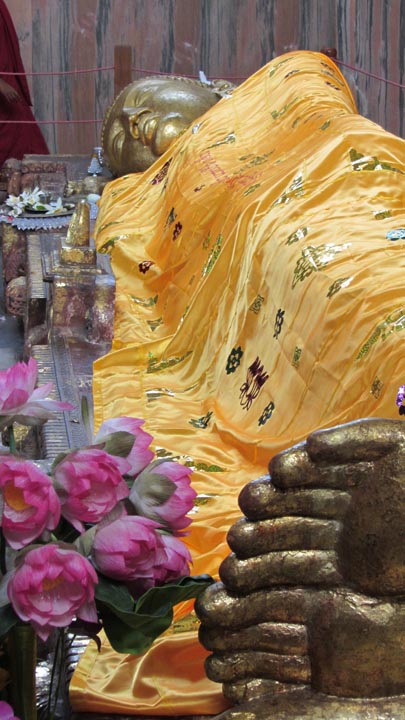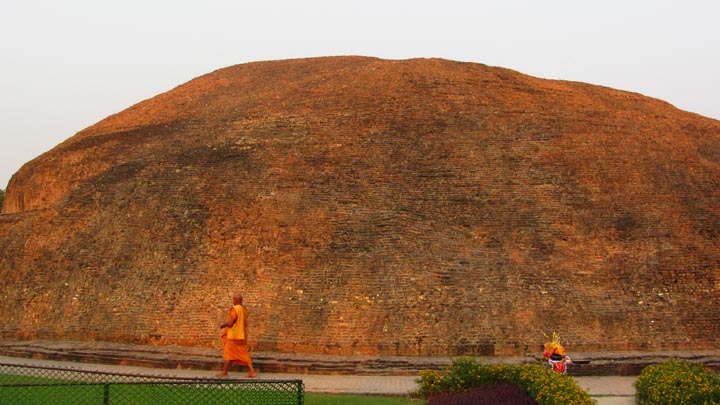This interview with Tsoknyi Rinpoche took place on November 10, 2011, in Paro, Bhutan on the last evening of the pilgrimage.
A message from Tsoknyi Rinpoche to students who could not attend this pilgrimage ~
“Many times during the pilgrimage, I have thought and prayed for all my students, whether on this particular journey or not. In this sense all of you have been with me, and we have journeyed to these sacred places together.”
Pilgrims at Paro, Bhutan
Q: Throughout recorded human history people from all over the earth have gone on pilgrimage to holy places. How is this ancient human activity understood from a Buddhist point of view?
Buddha at Maha Bodhi Temple Guru Rinpoche at Paro, Bhutan
A: Pilgrimage can be a profound inner and outer journey that opens us to increasingly deeper awareness and experience. Classically, pilgrimage is divided in Tibetan Buddhism as having three interwoven aspects: innermost, inner and outer. These correspond to the three basic levels of reality: dharmakaya, sambhogakaya and nirmanakaya.
The innermost or dharmakaya aspect is primordial purity and to visit this “place” we have to dissolve our cognitive and emotional obscurations (klesas) and directly recognize the child luminosity. This is the royal path to this most secret (hidden only by our obscurations) and sacred place.
Guru Rinpoche hand print at Pharping Guru Rinpoche cave
The inner or sambhogakaya realm is accessible when we have cultivated the ability to experience all phenomena in their perfect purity as they would appear in a Buddha realm. Our way in to this realm is pure perception or pure vision.
Outer appearances take two forms—through the accumulation of merit, strengthening our aspirations, the practice of bodhicitta and the wisdom of emptiness, we can create a special kind of “passport” to the supreme nirmanakaya realm and take birth in places such as Sukhavati or the Copper Colored Mountain in our next life. In these dimensions of reality we can fruitfully continue our journey to full enlightenment.
The impure aspect of nirmanakaya is that aspect or dimension of reality that we perceive with our five senses. By going on pilgrimage to one of the 25 actual places on this earth where great masters such as the Buddha, Guru Rinpoche and others have lived, practiced and gained realization, we can potentially experience their pure enlightened energy.
This connection can positively affect us and be used to enliven and deepen our practice. It is the power of great masters’ timeless awareness that bless the elements and beings in a specific place that allows us to be transformed.
Bodhi Tree where Lord Buddha achieved enlightenment
When we travel to a place such as Bodhgaya in India or Tiger’s Nest in Bhutan, we make an actual physical connection with a sacred place and can open ourselves to the blessings that subtlety permeate the atmosphere. It is very helpful then to make our deepest aspirations to follow in the footsteps of the realized beings who were (and are) invisibly present. Their teachings and lives are a model or profound pattern that we can emulate. This is a powerful way to enhance our practice.
Teachings at Tergar with Tsoknyi Rinpoche
Tsoknyi Gargon Ling, Muktinath
Q: Can you tell us a little about the consecration at Chumig Gyatsa of the new shrine hall? Most of us don’t know its rich history or connection to Khamtrul Rinpoche as a place of practice for the Tsoknyi Lineage Nuns. My understanding is that thousands of people came, some walking for days to get to the Muktinath area. Also, for those of us who don’t know, why is so much effort and time put into a consecration?
Tsoknyi Gargon Ling, Muktinath
A: Here is a little history of the nunnery taken from my welcoming speech at Chumig Gyatsa:
Now that the final construction of the nunnery is completed, after so much work and effort by so many people, it is nice to reflect back on some history that made it possible for us to be here together today.
Over 2,000 attended the consecration
Jetsun Tenzin Repa, a great wandering yogi, came to Chumig Gyatsa many centuries ago and had a pure vision of this sacred place. He founded this nunnery as a place where women could come and dedicate their lives to practicing the dharma. Over the centuries, under the guidance of many excellent lamas, the nuns of Gargon have upheld the Dharma very well. At certain times they have gone without a lama, but senior nuns whose practice and love were strong, took responsibility for maintaining the land and the lineage.
Inside the new shrine hall
Approximately 21 years ago, I was sitting in a room at the monastery at Gar Gompa when an attendant rushed in and breathlessly announced that the King of Mustang was on his way. He came quickly and after customary greetings, the King said that what is now named Tsoknyi Gargon Ling was an important monastery that needed to be protected and preserved. The former lama who had previously looked over the monastery had died 40 years earlier and his rebirth had not returned to this monastery. The King was aware of the Tsoknyi lineage and its support of female practitioners in Tibet and felt that I could help. I have to say at this point in my life that I was a bit stunned—I was in my early 20’s at the time—and I said I needed a little time to think about this responsibility and would respond to him as soon as I could.
Anis in ceremonial procession during consecration ceremonies
Quite fortunately, my father, Tulku Urgyen Rinpoche, was living upstairs at the time, and I sought his wise counsel. I told him what had just transpired with the King downstairs and after listening carefully to my story, he was quiet and reflected for a little while. He then said that he felt the King was sincere and that it was significant that he was personally involved in this matter. He told me to really check out the situation at Tsoknyi Gargon Ling and see for myself. I flew up to Muktinath with Lama Tashi Dorje a few months later (by the way this was the almost fatal plane fight where I got PTSD and because of this experience learned how to work with trauma). When we finally arrived I saw one temple and a few old nuns and then one young woman who wanted to become a nun. My heart was quite moved by this and since then I have been able to give about 25 women refuge vows.
Anis demonstrating debate skills
Now I am so happy that we have the help of so many people help and the special care and support of many students (especially Jean Chang), that we are about 95% done completing a new and beautiful gompa for the nuns who practice both the Ratna Lingpa (Nyingma) and Tsoknyi (Drukpa Kagyu) lineages.
Jean and Jim Chang
Julie Green distributing new socks to Anis
Anis with Lhabu-la and Konchok Palmo (Tsoknyi Rinpoche’s daughters)
The essential purpose of a consecration ceremony and why it is so important is that the blessings or spiritual influence of the symbolic wisdom deities are invoked and transmitted to, in this case, the new gompa and all the beings either directly or indirectly connected to it. For example, the incarnations of illustrious masters such as Khamtrul Rinpoche and the Drukpa Kagyu lineage are directly related to the three incarnations of Tsoknyi Rinpoche. In Tibet, Tsechu Gompa, one of the main monasteries in Tibet related to the Tsoknyi Lineage, is a branch monastery under Khamtrul Rinpoche. This is why I invited Khamtrul Rinpoche from Tashi Jong in India and some of his senior monks there.
Tsoknyi Rinpoche, Chokling Rinpoche, Khamtrul Rinpoche, Chokyi Nyima Rinpoche and Shangpa Rinpoche
Lama Tashi Dorje (Tsoknyi Rinpoche’s Grandfather), Khamtrul Rinpoche, and Tsoknyi Rinpoche
Q: Many of the pilgrims commented on an unanticipated feeling of deep love and happiness when praying and practicing at the Buddha’s sacred places despite the periodic, hardships of travel and sickness. For example, the stupa at Bodhgaya could really be crowded and noisy, yet it was hard to leave each day, as if one had found a true home. Many pilgrims commented on how the mind could easily rest at peace there beneath the swirl of activity. What is it about a place like this that opens us up in ways we often can’t imagine when practicing at home?
A: When great beings with open minds and hearts come to a sacred place, the land and elements are blessed. It is possible to sense or feel this when we practice at sacred places. After the Buddha’s enlightenment at Bodhgaya, there has been a long history of great masters coming there to practice and give blessings. When my father, Tulku Urgyen Rinpoche, first came to India from Tibet, the first place he wanted to visit and pay homage to was Bodhgaya. Even though he didn’t have much time, he traveled quite far just to spend a few hours there. At a later time, he was able to come for a longer period. He felt that he must practice there before he died someday.
Buddha at Maha Bodhi Temple
I know all my main teachers have come here and practiced. For me, personally, Bodhgaya was the place where I gave my first teaching to about 100 westerners. I had not planned to do this but it was one of those things that just happened and has lead to my now more than 20 years of teaching in the west.
Maha Bodhi Temple, Bodhgaya
Q: The Karmapa, at your invitation, spoke in Bodhgaya at his beautiful temple there. One theme he addressed was the importance of an intelligent compassion that really examines situations with clarity and care. Often we associate compassion with a feeling or an emotional reaction to some event that moves us. Can you say more about what he may have meant when describing compassion?
HH 17th Karmapa at Bodhgaya
A: I had heard that HH Karmapa was planning on being in Bodhgaya at the same time as our pilgrimage and I asked him if he would give some teachings to our group. I also asked Chokyi Nyima Rinpoche, my older brother, if he would come and teach, too. I was happy that these two masters could benefit my students and that they would be relieved of my “rubbish” teachings—as compared to them—(and perhaps give me some time off, too). Initially, I hoped that HH Karmapa might give Bodhisattva vows, being a genuine bodhisattva, at his beautiful new temple in Bodhgaya. Many of my students have asked me for these vows but I am really not qualified to give them. As it turned out, he did not give these vows, but instead gave the lung to many mantras and gave a very insightful teaching on the nature of compassion in which he emphasized the importance of the wisdom aspect of skillful means.
Vajrasana, Buddha’s seat where he attained enlightenment under the Bodhi Tree
One side comment about these teachings on compassion is that we need to understand that there is intelligence both within feelings (emotional intelligence) and our cognitive faculty. Skillful actions on behalf of others need to be aware of both feeling and thinking and balance these when we act for others. We can examine ourselves and use our feeling nature and cognitive awareness as a kind of check and balance system against each other to make sure we truly have wise compassionate.
Dilgo Khyentse Yangsi Rinpoche giving teachings to fortunate pilgrimage participants
Nyoshul Khen Yangsi Rinpoche and Tsoknyi Rinpoche at the former Nyoshul Khen’s resting place
Q: One important aspect of the pilgrimage was experiencing how your teachings on essence love seem so alive, natural and rich in an ancient Tibetan Buddhist country like Bhutan. The people have been steeped in Vajrayana for centuries and seem, as a whole, to have a grounded openness, dignity and light playful quality. Can you comment on how leaving home physically and also leaving “home” intellectually helps us to experience and feel the living quality of dharma?
A: As we were walking up to one of the sacred sites in Bhutan, one of my students kind of grabbed me and said quite enthusiastically, “Rinpoche, I really understand now what you have been teaching about essence love. These people are happy and for no reason!”
Outside and inside Lady Yeshe Tsogyal’s cave at Taktsang, Bhutan
I think many of my students felt the genuine and abiding happiness and contentment of the people here. Essence love is still alive and present due to the long, uninterrupted and pure practice of dharma as a way of life for many generations and the continuous presence, guidance and blessings of great beings. The physical environment has been impressed by their energy and the elements then become part of the people living in a particular place. Also, the modern world is not very strong here—things work and work well here in Bhutan, but with a different quality of awareness and activity.
Children can grow up naturally and freely without the hopes and fears and transaction-based love that parents in modern cultures often place upon their children. Essence love can flourish and penetrate the whole cultural and social environment. Happy for no reason, to be a healthy human being, comes out of this. We can feel this in many of the Bhutanese people if we go to a public gathering. They naturally enjoy themselves, are relaxed, yet everything is also clean and well organized, too. They balance a more open and playful sense of time with attention to changing conditions with the need for appropriate structure or containers.
Q: Can you tell us how it was for you being on pilgrimage with many of your students and family (your grandfather and mother) and introducing all of us to so many sacred places? You have such an incredibly busy teaching schedule and a myriad of commitments throughout the world, yet you chose to spend all these weeks leading this journey. Why did you do this?
Pharping, Nepal: Guru Rinpoche cave and Guru Rinpoche rupa
A: When I was young I enjoyed going to sacred places and how going to them could really benefit practice. So when my students asked me to lead a pilgrimage to many of these places, I felt when the time was right it would be good to do. Also, my grandfather, who is 96, had always wanted to see Bhutan. He wanted to go where the continuous presence of Guru Rinpoche and many other masters was alive and strong. We combined the already planned consecration at Chumig Gyatsa with a pilgrimage to the four sacred sites of the Buddha’s life and Bhutan, I felt this would be a wonderful thing to do.
Chokyi Nyima Rinpoche and Tsoknyi Rinpoche
Q: Coming home from a pilgrimage to our busy lives and speedy societies can be a shock of sorts. The enthusiasm and “high” of the long journey is not enough. How do we not lose or let fade away the deeper truths of the journey? What are practical ways we can use this experience to enhance our practices at home? The pilgrimage had such a vast range of experiences, from contact with the most profound and sacred beings and places to the raw and painful streets of Calcutta. How can we use all of this to touch more deeply the very heart of bodhicitta?
Vulture’s Peak where Lord Buddha taught the Prajnaparamita
A: The key is sustaining mindfulness when we find ourselves in our normal lives. We can deliberately use our memory of sacred places and how they influenced our mind stream to recollect and reconnect to what the essential blessings were. We can make those present again to inspire our practice and stay connected to what was sacred. We can touch the blessings of masters who have practiced in certain places and train ourselves to keep recalling this experience. If we do this over time, we can develop pure vision so that our experience in the world is gradually transformed. We try to become more and more like their minds and hearts.
Offerings at Vulture’s Peak
Bodhicitta comes out of genuine essence love. Once we have uncovered essence love and this becomes our basic way of being, then it is possible to open more and more to boundless love and compassion. The fruition of this practice is bodhicitta.
The Magical Snow Shower at Vulture’s Peak: Mayum-la, Choegon Rinpoche, Tsoknyi Rinpoche, Lama Tashi Dorje, and Tashi Lama
More beautiful pilgrimage memories:
Early morning boat ride on the Ganges River
Lumbini: Garden where Prince Siddhartha was born
Lumbini: palace ruins
Sujata in Rajgir, where Lord Buddha spent 6 years in ascetic practice
Kushinagar, the site of Lord Buddha’s paranirvana
Kushinagar stupa built by Emperor Ashoka


